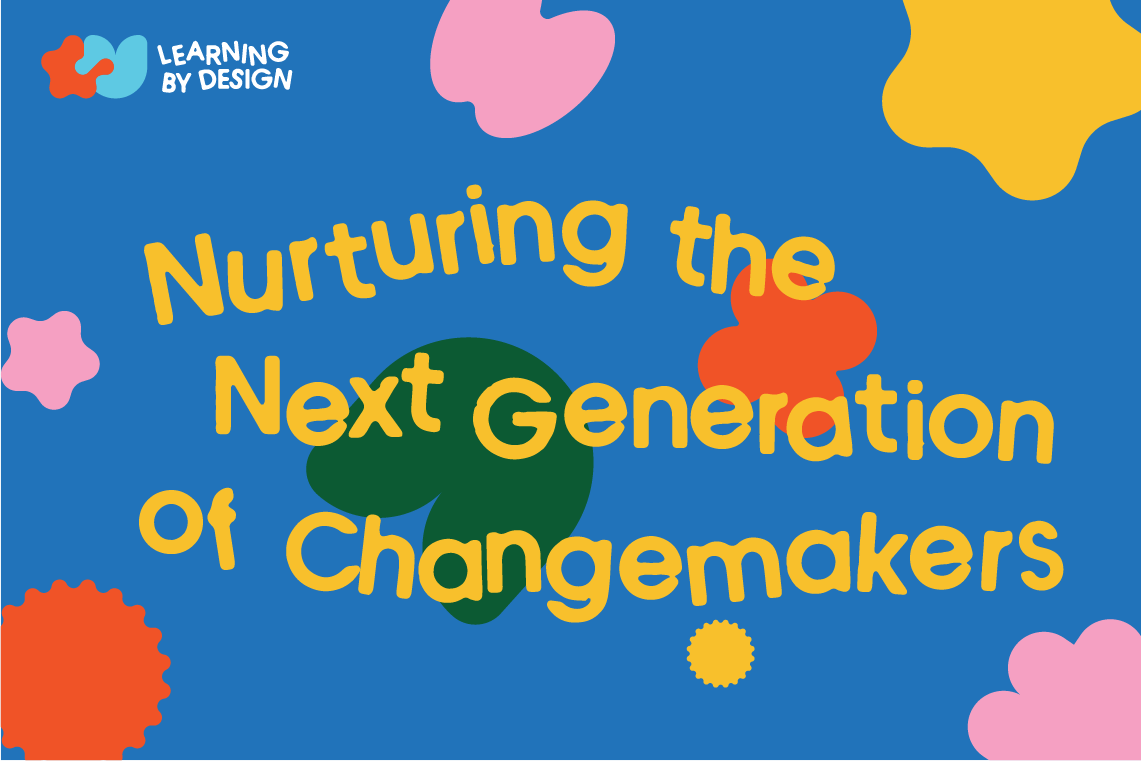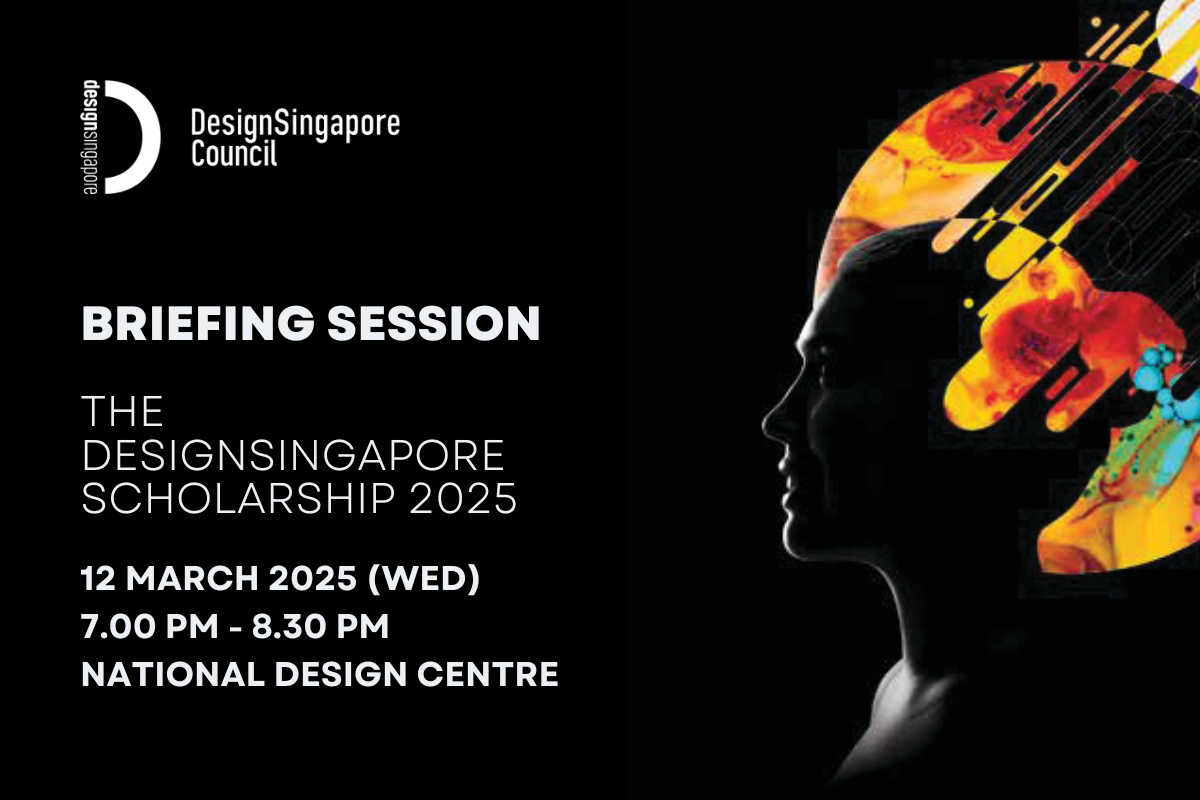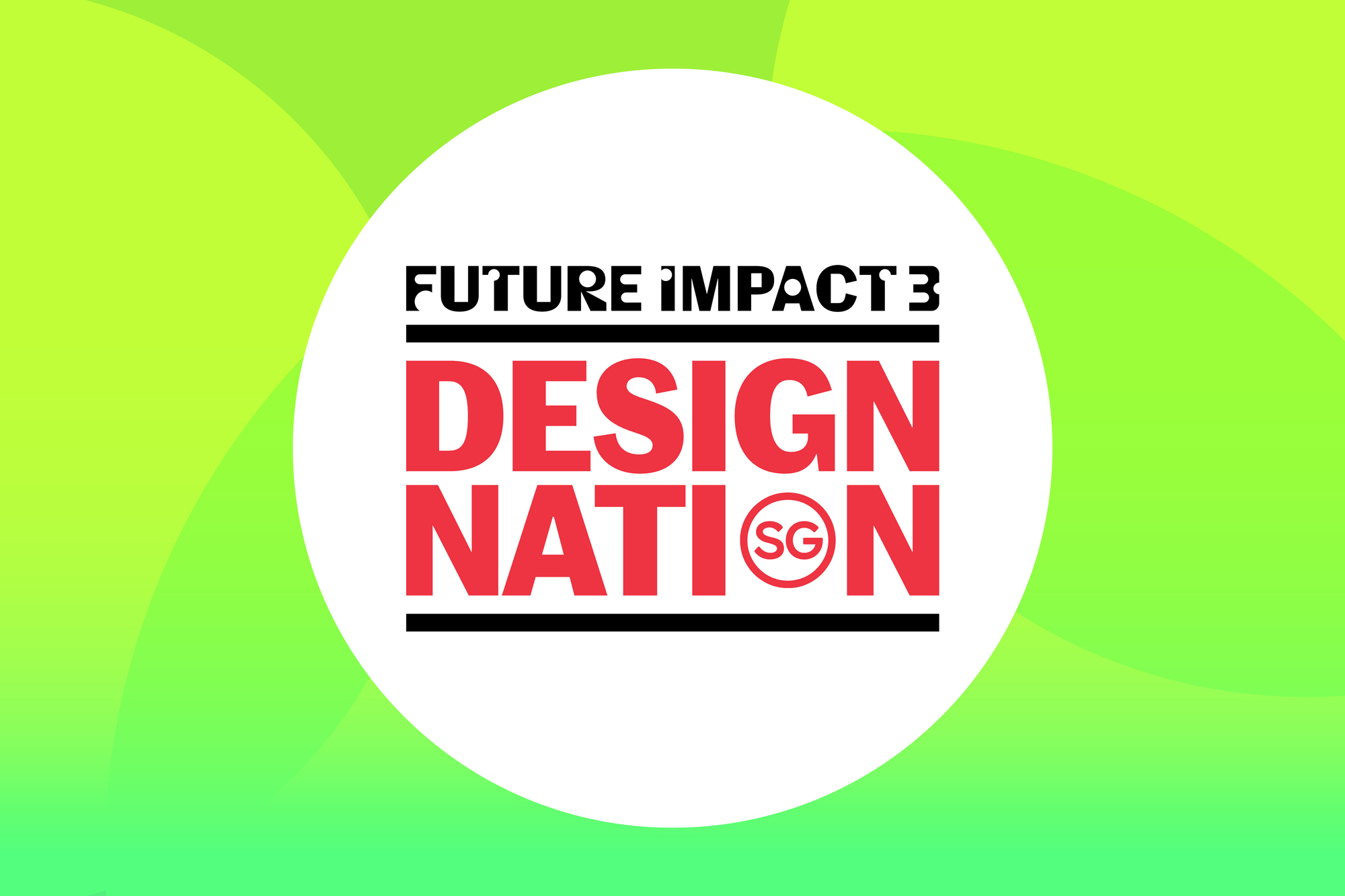Three tips towards Design Being
A year ago, during a robust debate on whether Design Thinking was overrated at the inaugural Brainstorm Design conference, then Executive Director of DesignSingapore Council Agnes Kwek shared her idea of a “Design Being”. Agnes, who is now Design Ambassador for Singapore based in Paris, elaborates on the concept in this article.
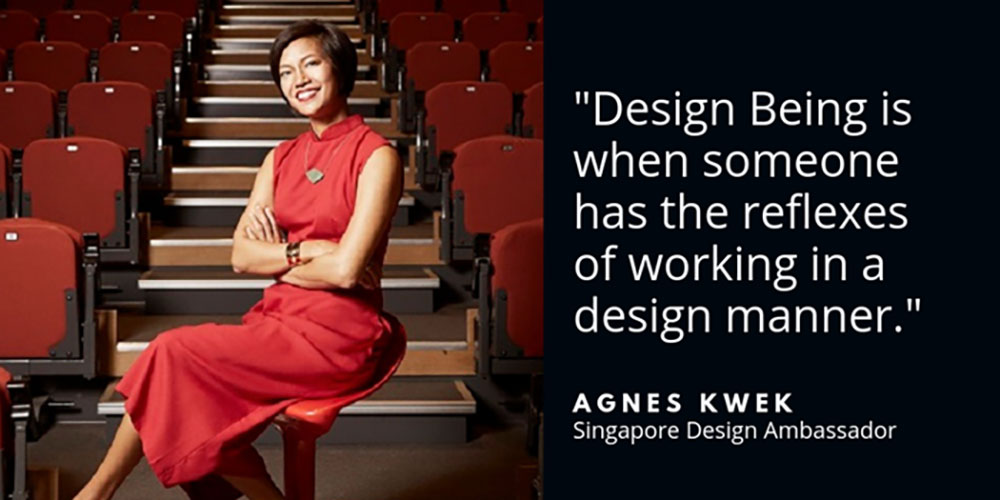
The topic of “Design Being” is one I’m deeply passionate about. To me, Design Being is when someone or a team, an organisation, or even a country has the reflexes of working in a design manner.
This is not merely just about following the design process, but something far deeper. It is about having design values deeply embedded in our ways of working – design values such as putting the user in the centre, collaboration, and experimentation.
Design Being is about being agile in the face of change, and finding opportunities in disruption, while keeping our humanity, and in doing so, making a positive impact on the world.
I have spoken to many transformation or design teams, whether in the public or private sector, Singapore or overseas. The single largest barrier that they all face in common is change management. This boils down to convincing key stakeholders, such as finance for resources, a business unit to reinvent their product line with the design teams, or a regional MD to open up his market to pilots.
How can we get our colleagues to embrace design? What are some of the key factors that will help design to be successfully embedded? Let me share some reflections from Singapore’s experience.
Lesson 1: Lead with vision, not with process
There is no point hammering on about design as a method. I can assure you no one cares, except design geeks. What busy leaders want to know is “where will this get us?”.
Instead, excite people with a big, bold aspirational vision first, and then show how design will get us there. Let me give an example.

When I led the transformation effort at Land Transport Authority of Singapore (LTA) in 2014 – the government authority in charge of designing and building all transport networks, from trains, to buses, to roads – the burning platform at the time was rail reliability.
After a series of high profile train breakdowns, the government was under pressure to deliver more reliable train services, despite the fact that it was already one of the best in the world. There seemed little room to talk design; engineering chops ruled the day.
But our team linked design back to the larger objective of a car-light Singapore. In a country which was land scarce, where roads have already taken up 12% of land space (compared to 14% for residential), cars cost on average three times the price of that in Europe, which meant that they were status symbols.
We had already used many pricing tools available – heavy import taxes on cars, and tolls for car entry into the city centre and congested roads. But pricing tools come with a political cost. Our team argued that most sustainable way towards a car-light Singapore is to make public transportation desirable and loveable. This called for experience design.
We went about showing that if we designed public transport spaces thoughtfully, we could provide a better experience without increasing service levels or reducing the price. We held experiments such as the football-themed cabin to show that we could improve happiness for 80% of commuters through design, without increasing service levels or reducing price.
Were we sure that any of this would work? No. But was it bold to want a loveable public transport system? Yes. And this boldness was enough to make a few crazy people take a chance on us.
These early design experiments eventually led the LTA to use design thinking for the upcoming Punggol Coast MRT station. The Punggol Coast MRT station is part of an extension to the North-East Line – it will serve new housing estates, a digital business district, and a new university campus. LTA conceptualised the new station using design thinking, mounted commuter-behaviour studies and prototyped concepts. As a result, it introduced the “civic commons” feature, an open public space where the community and students can mount exhibitions and engage with the digital businesses in the district.
My observation of change teams is that they tend to play safe in laying out their vision for the future. Secondly, they don’t talk enough about their work. Inspiring other is the first step to change management. Unless you offer a vividly different – and better – alternate future, why would anyone bother to jump in with you?
So the next time you are going to talk to your stakeholders, ask yourself – is the future I’m offering exciting enough?
Lesson 2: Help others be successful
Every year during Singapore Design Week, we hold an anchor conference on design in business called Brainstorm Design – this is organised in partnership with Fortune and Wallpaper* magazines. We invite CEOs and Chief Design Officers from large companies to talk about how they embed design in their businesses.

The key tip to success from CDOs like Mauro Porcini from Pepsico and Ernesto Quinteros from J&J has been: “I help other business units be successful. I find out what problems they are working on, and help them solve it using design.” Demonstrating the power of design is the best call to action.
In Singapore, when the DesignSingapore Council engages local businesses to help them use design, our conversations with CEOs always starts with understanding what challenges they face. Our programme, Innovation By Design, helps companies embed design capabilities by working with them on real-life projects.
My observation of design teams is that they are so focused on their customers, that they tend to forget that internal stakeholders are users too. The next time you talk to BUs, don’t make this about how they need to restructure their operations to help your project. Instead, find ways for how your project can help them. Find a common ground. This, to me, is where the real creativity of design lies.
Lesson 3: Design needs designers
This may be stating the obvious, but you will be surprised at how many times organisations seem to forget that.
I’ve had the fortune of meeting many inspiring, forward-thinking leaders. Usually, they are already sold on the power of design, and had mandated all employees go through design training, usually two- to three-day bootcamps, to kick-start their organisational transformation. But then they are surprised, and disappointed, when change does not take place.
I liken this to having a stadium full of football fans who know the basic rules and appreciate the game, and are ready to cheer, but with no professional athletes in the field and no coach. Have a look at the infographic we have developed to illustrate this ecosystem.
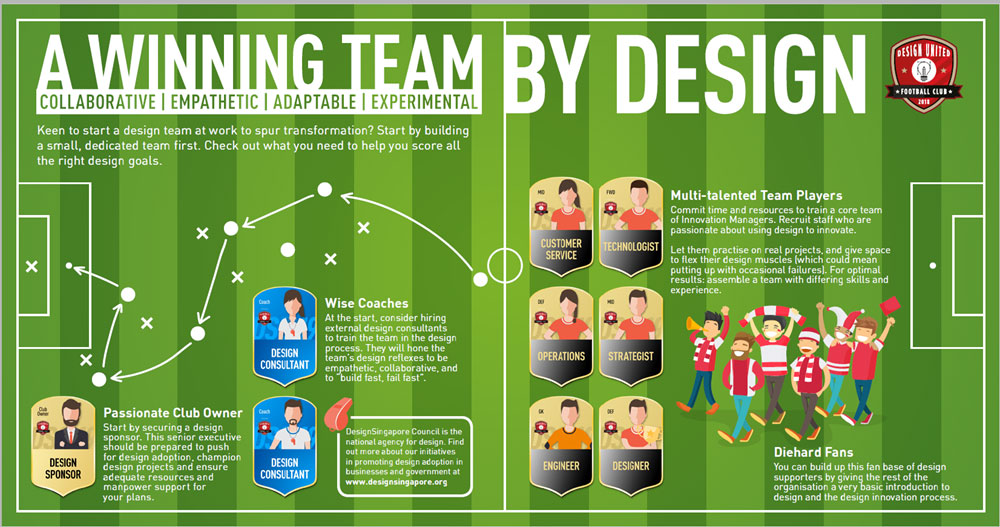
To have a winning team by design, we need:
Leaders who are prepared to advocate for design, champion projects and dedicate resources to it. Using the football analogy, these are the “club sponsors”
Innovation managers who know how to manage the whole design process, bringing on stakeholders, and know when to pivot. These are the “professional athletes”, who also need a good coach and opportunities to practice.
Supporters who have a basic language and appreciation of design. Design has become a basic mindset that everyone needs, a bit like digital.
Across government, businesses and non-profits, we see the potential for design to be applied to interesting problems. The timing is perfect for design to be playing a stronger role.
In 2010 when I was at the Prime Minister’s Office, I started the public sector’s first in-house design team. Today, we estimate that there are 30 or so such teams across public sector agencies, using a mixture of design, behavioural economics and data tools. And there are more in the private sector.
Demand for designers in Singapore is set to rise at a compounded annual rate by 4.24%, from 58,000 today to 71,400 by 2022. Most of this is driven by the services and technology sectors, like banks, tech companies, consultancies, healthcare. The key skill in demand is service and digital design.
So why aren’t more designers hired?
Here, I’m going to be provocative. My hypothesis is that design education by and large has yet to play catch up. Generally, design education has been rooted predominantly in single disciplines. They might sometimes dabble in user experience, but generally not enough.
Designers need to understand that their roles have evolved. You are no longer asked to just follow the brief – your value is in creating the brief, bringing people across the company together to execute the brief, and pivoting the brief when needed. This calls for vision, strategic thinking, collaboration and agility. You now play an integrative function across business units. Similarly design institutions have to evolve to ensure that the design talent they nurture will have these requisite skills.
While I have full confidence that we will see more of Design Being in the coming years but make no mistake: transforming through design is a difficult, lonely affair. Organisations are designed for efficiency and hierarchy, everything that a messy, iterative design process is not. You will rub people the wrong way. You will get the cold shoulder. But I hope you will remember these three tips to guide you.
Note: This article is adapted from the original presentation given at the EXALT Forum by Strate School of Design in November 2018. Please ask for permission to reproduce in part or full, or to cite. Email [email protected]



